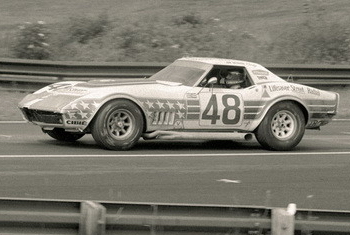Renaissance Racer
John Greenwood was a talented driver and engineer who built the fastest racing Corvettes of the 1970s. It would be fair to say that John Greenwood was born with gasoline in his veins and speed in his heart. His father, who served as a fighter pilot during World War II, worked at the GM Technical Center in Warren, Michigan, and some of John's earliest childhood memories centered on cars. In 1954, when he was only nine, Greenwood used money earned from delivering newspapers to build a small, tube-frame car powered by a 2.5-horsepower Briggs & Stratton engine.

In the 1950s and '60s Detroit was a hotbed of high-performance cars, and Woodward Avenue was ground zero for illicit street racing. Greenwood began cruising Woodward in 1960 with a 1955 Pontiac fitted with a 421-ci engine. A fuel-injected 1958 Pontiac, then a '57 Chevy and eventually a 409 Impala SS followed. He developed considerable expertise building engines, at first boring and stroking 409 Chevys and then graduating to NASCAR-spec big-blocks. As soon as he'd conjure up a way to squeeze out more power, he would sell his old engine to finance the build-up of a new one.
Realizing he could get far better performance with the same engine if it was in a much lighter car, Greenwood sold his Impala and bought a 1964 Corvette, which weighed almost a thousand pounds less than the full-size Chevy. He managed to get his hands on an early 427 engine, which he rebuilt with higher-compression pistons, a hotter cam and a stronger bottom end. Although he quickly discovered that the '64 Corvette was not designed to accommodate his new "Mark IV" big-block, Greenwood was never one to shy away from a challenge. He modified the front chassis crossmember with an oxy-acetylene torch and a ball peen hammer to provide clearance for the harmonic balancer and crank pulley.
Read the entire article
Source: Richard Prince, Corvette Magazine